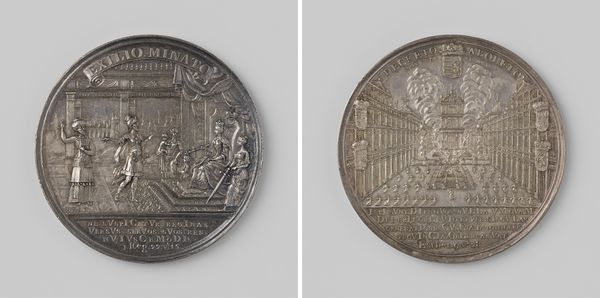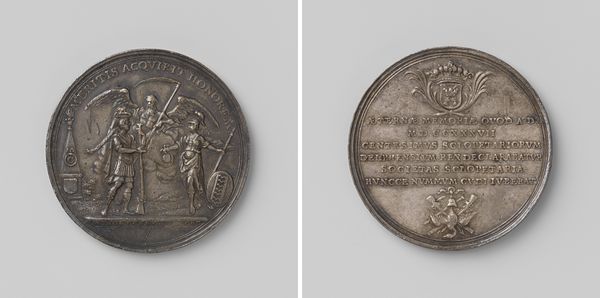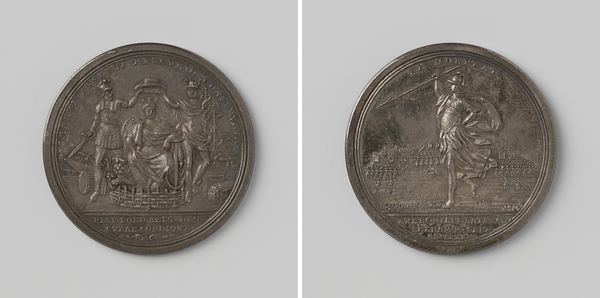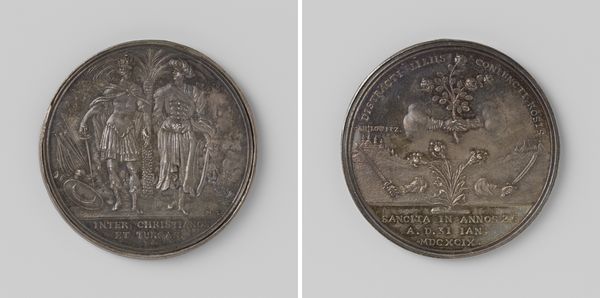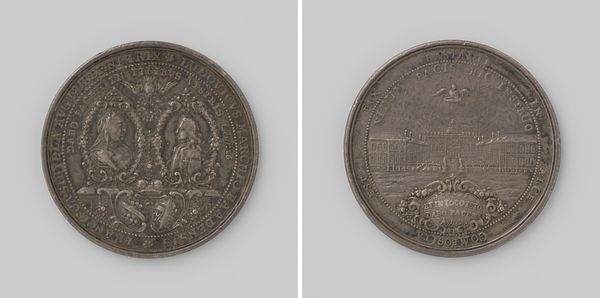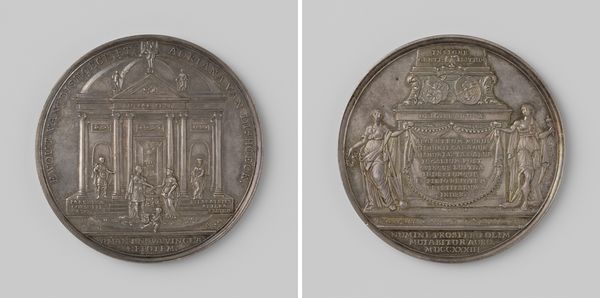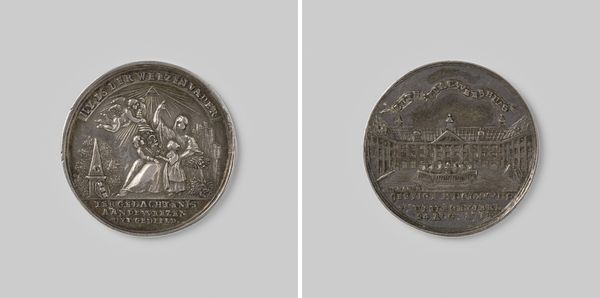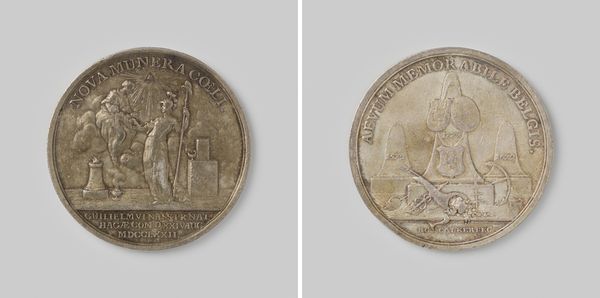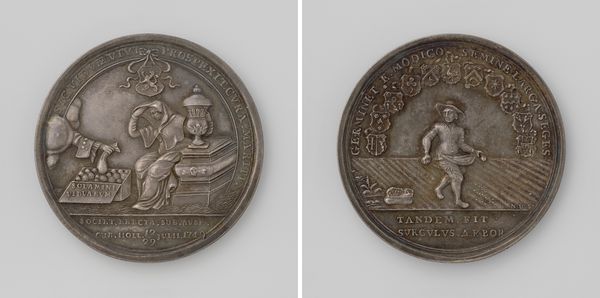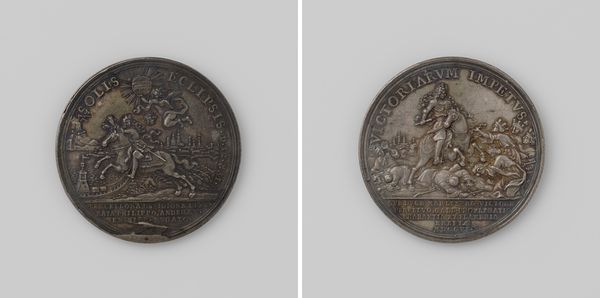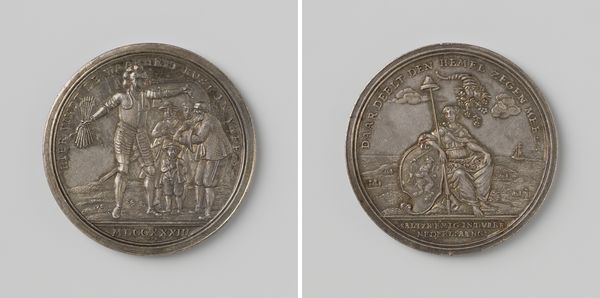
metal, relief, sculpture
#
portrait
#
baroque
#
metal
#
sculpture
#
relief
#
sculpture
#
history-painting
Dimensions: diameter 4.9 cm, weight 42.53 gr
Copyright: Rijks Museum: Open Domain
Editor: So, here we have a metal relief by Martin Holtzhey, titled "Stichting van de Lutherse kerk te Middelburg," dating back to 1741. The artwork has a very formal and commemorative mood, with these almost neoclassical figures and architectural details. What kind of story do you think this object tells? Curator: It is a powerful visual statement indeed. Commemorative medals such as these were often used not merely as records of events but also to shape public memory and reinforce political and religious authority. Notice how the two sides depict different aspects of the church's foundation: on one side, the symbolic representation of architecture, and on the other, a theological allegory. Editor: You mentioned "shaping public memory." How would a medal achieve this compared to, say, a painting or a building? Curator: Think about the accessibility and dissemination. Medals were often produced in multiples. They circulated amongst a particular segment of society and functioned as tangible endorsements, reinforcing loyalty, identity, and shared beliefs, particularly during times of political and religious tension. In that sense, it acted as an important propaganda object. Do you see any specific iconographic clues to back this up? Editor: Yes! There are Latin inscriptions running all around, classical figures such as the ones representing justice. Also on the left side, we can see instruments which stand for constructions or mathematics and an actual image of the Lutheran church in Middelburg. It seems to really be focused on authority, faith and foundation. Curator: Precisely. It highlights the importance of this particular religious institution within its historical and social framework, but is simultaneously advertising its message of reason and divinity. The interplay of text and image here is key. Editor: This makes me rethink what a seemingly straightforward image really represents! I had initially only perceived its austere, almost boring formality, but I've learned a new understanding of it as an object deeply embedded in the political and social landscape. Curator: Exactly. By studying art in light of its cultural purpose and societal significance, the work truly comes alive.
Comments
No comments
Be the first to comment and join the conversation on the ultimate creative platform.

